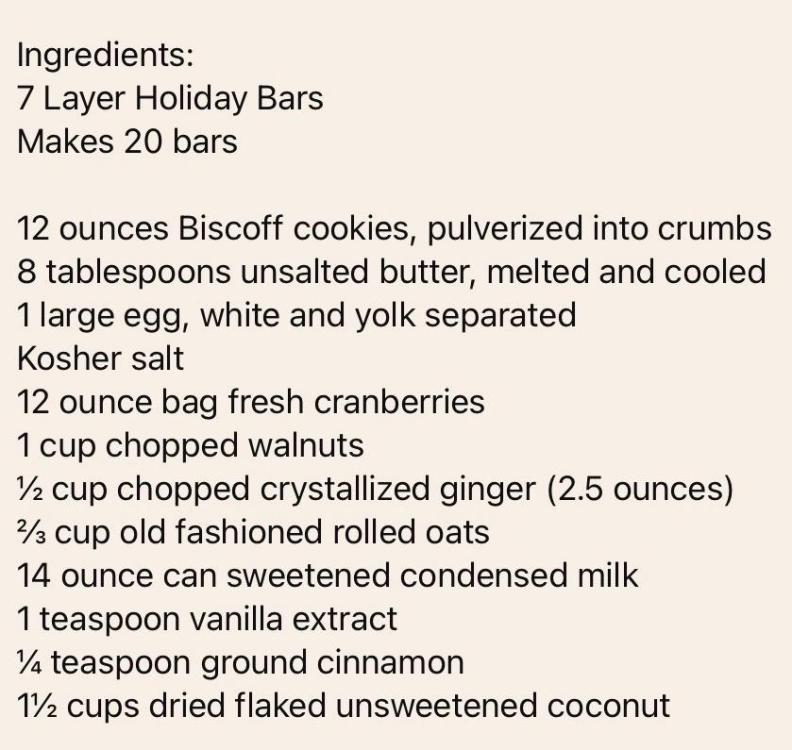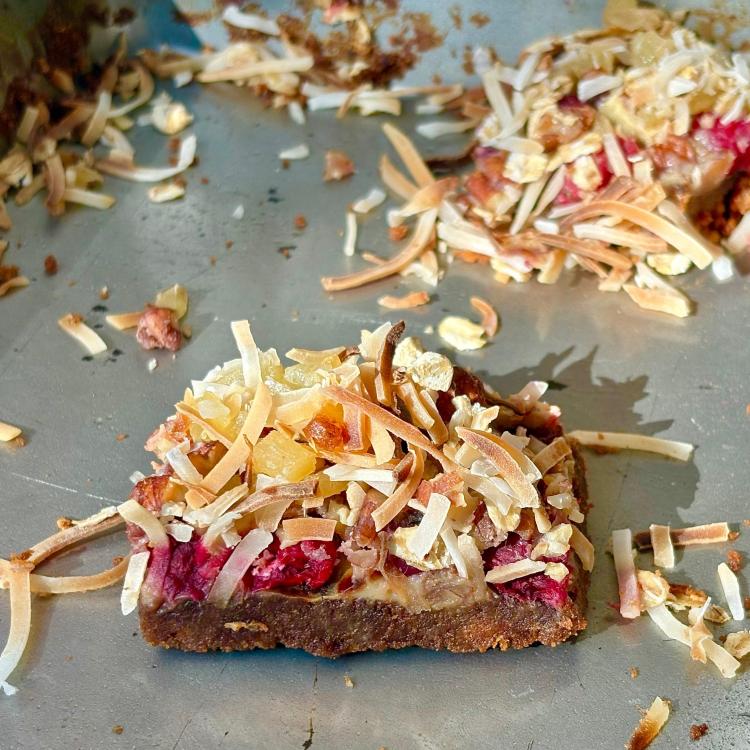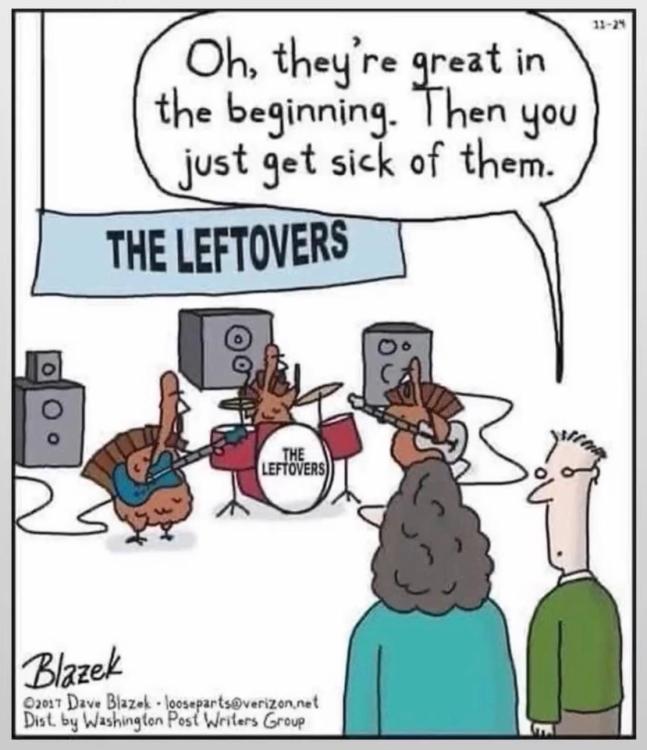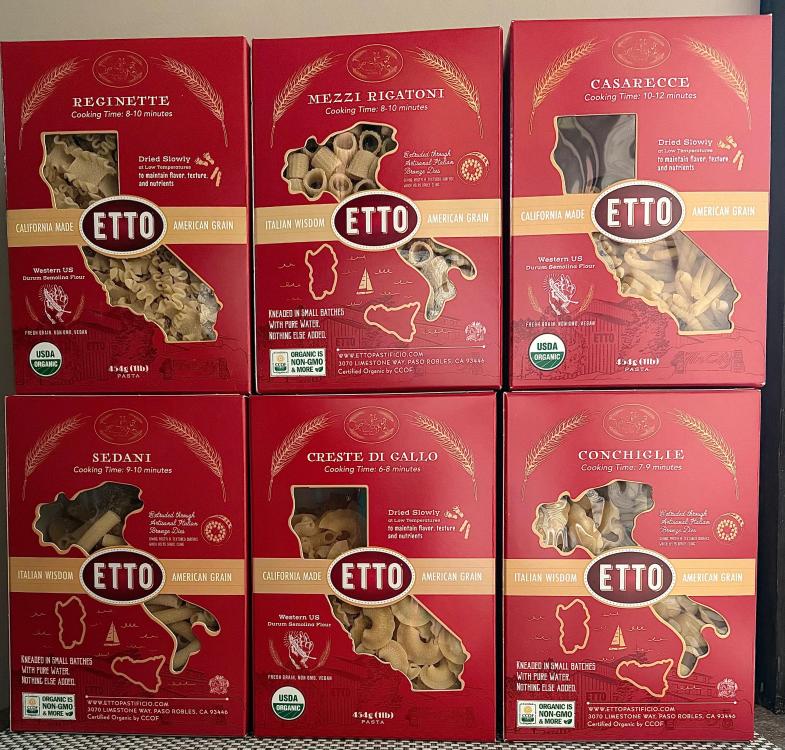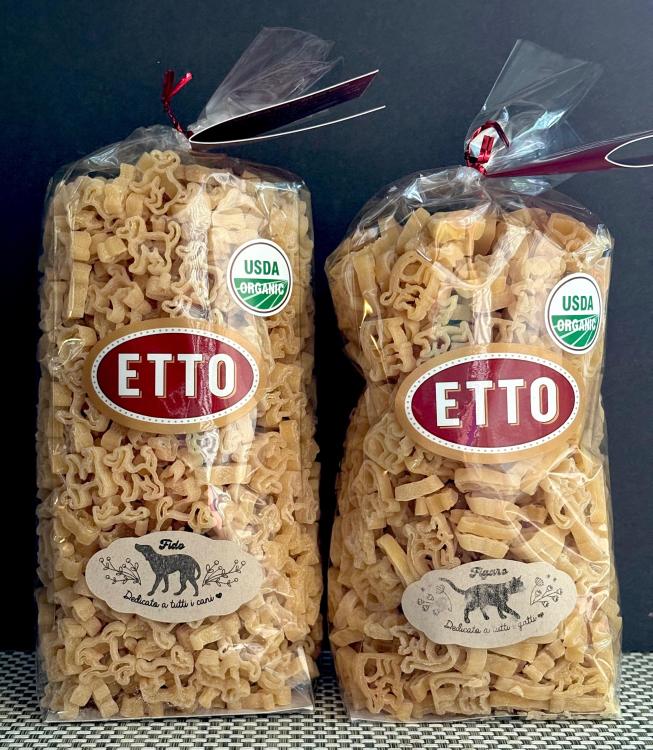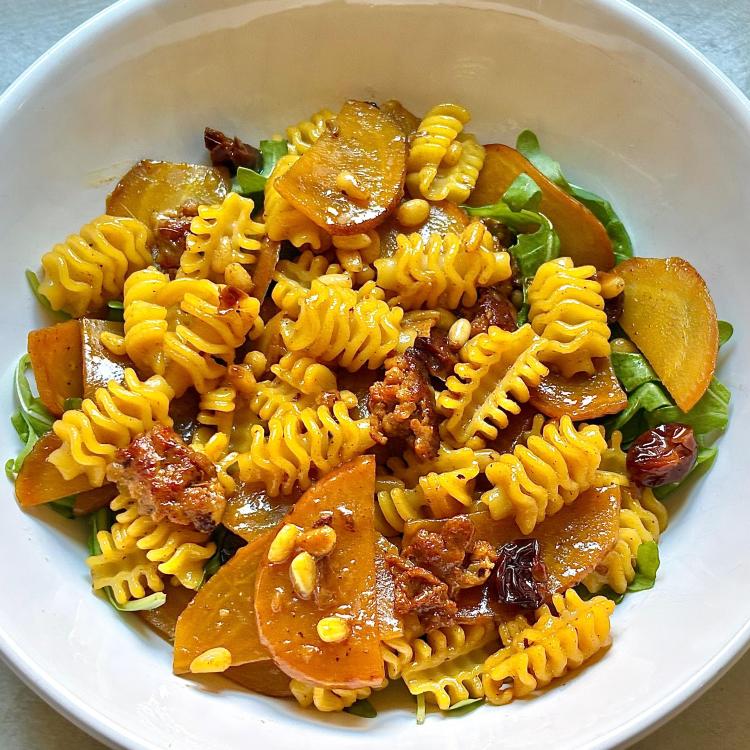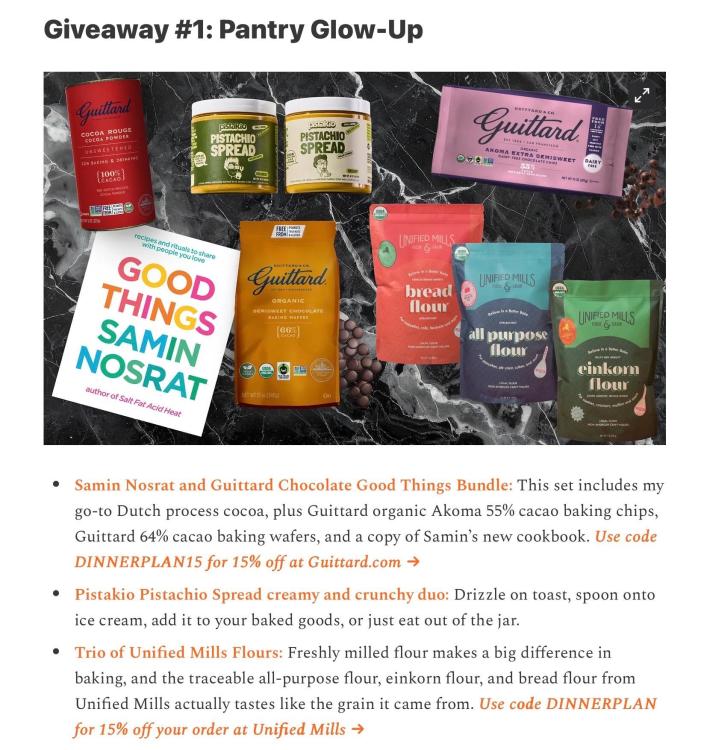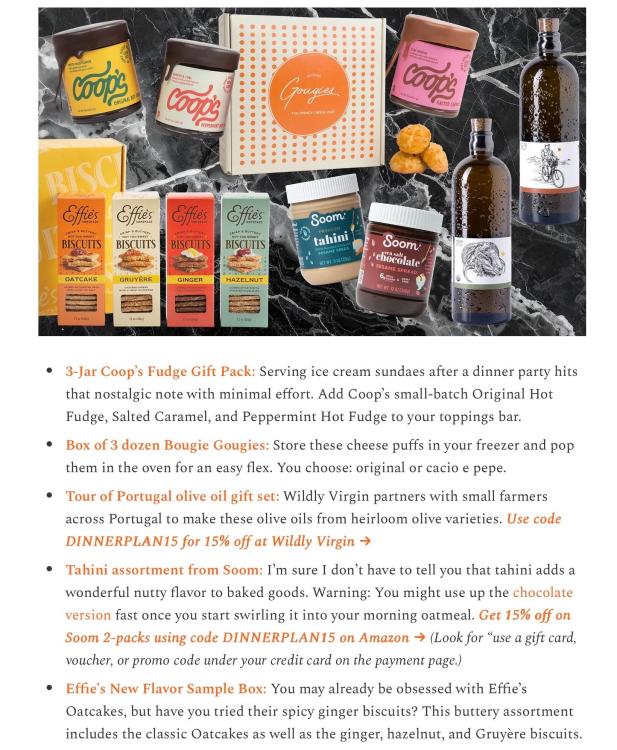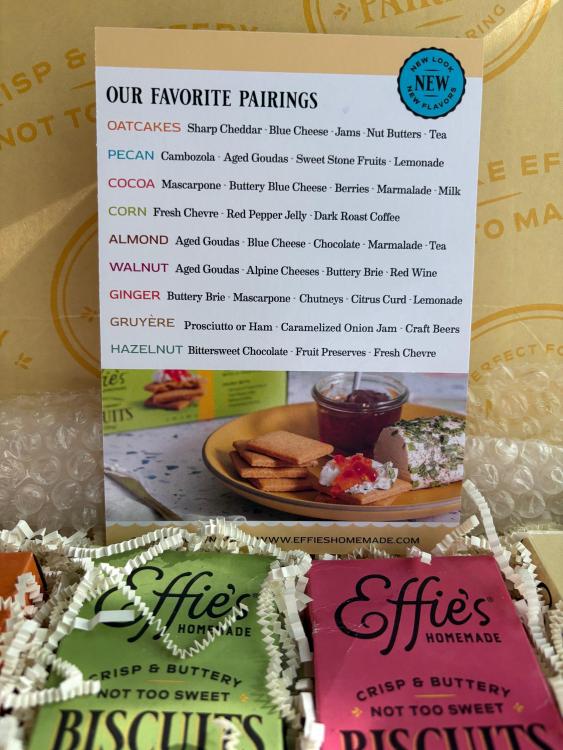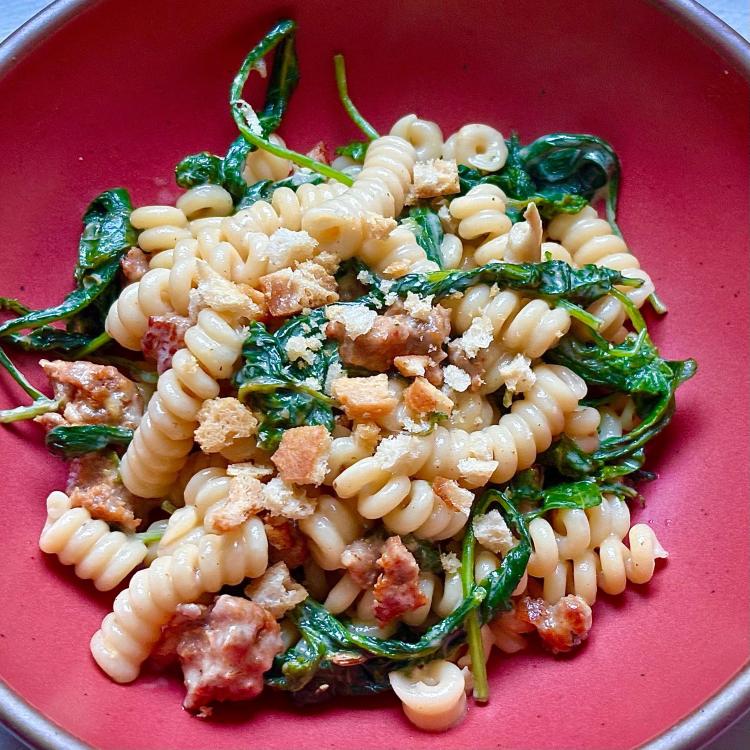-
Posts
9,135 -
Joined
-
Last visited
Content Type
Profiles
Forums
Store
Help Articles
Everything posted by blue_dolphin
-
@Smithy, as I was typing this, I got an email from Goûter saying shipping to my address would be $55 for one Pannetone, $65 for two and asking if I wanted a payment link.
-
The farmed shrimp we’ve gotten was from TransparentSea Farm, an operation that’s currently on hiatus as they purchase land and build to expand. They raise the shrimp entirely indoors in tanks and provide fresh, head-on shrimp only hours out of the water. Why do you feel such shrimp should be avoided?
-

Your Daily Sweets: What Are You Making and Baking? (2017 – )
blue_dolphin replied to a topic in Pastry & Baking
I shared this Claire Saffitz video for holiday 7-layer bars over in the Thanksgiving topic: Since I actually made them: And they were quite good, I figured I’d share the deets here in hopes I might find it again myself 🙃 These are the ingredients as they appear in the video description: And what I did, based on the video: Mix the Biscoff cookie crumbs (I used TJ’s Speculoos cookies), the melted, cooled butter and the egg yolk, press into a 9 x 13 inch baking pan and use the bottom of a glass or measuring cup to compact and level the layer. Bake at 350°F for 15 min While it’s baking, prepare the filling ingredients. Whisk the sweetened condensed milk with the egg white, a pinch of salt, 2 tsp vanilla & 1/4 tsp cinnamon. Layer the ingredients on the baked crust in this order: cranberries (no need to chop) nuts (I used pecans) crystalized ginger oats sweetened condensed milk coconut Cover pan with foil. Bake at 350°F for 10 min covered, then remove foil and bake 13 min more, until coconut is golden brown. My observations: My coconut wasn’t anchored in any way, making it hard to get nice squares. I used dried, flaked unsweetened coconut which the recipe calls for (to me, these are skinny shreds, like little matchsticks). She used what I would call dried, unsweetened coconut chips (very thin, but flat shreds) and said to add the milk mixture BEFORE the coconut because the coconut seals the surface and prevents the milk from seeping in. That may be so, but if using the skinny shreds like I did, I recommend adding the milk last, as is usually done in regular 7-layer bars. I’m not entirely convinced the egg does anything but the crust did hold together nicely so maybe it helps. I brought these to Thanksgiving and they were largely ignored in favor of the standard pumpkin & pecan pies but every one who tried them asked to take some home. They’re not terribly sweet and excellent with a cup of coffee. -
As the Guardian article the OP shared and @Alex’s follow-up details, it’s important to learn about the sources of fish and seafood available to us. By and large, US fisheries are quite well managed and provide good options for those of us in this country. For anyone looking for local fish and seafood options in the US or Canada, make sure to check out your options at https://finder.localcatch.org and filter by your criteria. I’m lucky to live in an area of the country with good options (availability of local seafood far from the coasts is understandably sparse) and privileged that I can afford to participate in a weekly delivery of fresh fish caught by local fishers. Every week, I receive info about the fishers who caught that week’s fish, their fishing methods, which port their vessel brought the fish into and background on the fishery for that species. Since the commercial salmon fisheries off California have been closed for a few years due to concerns of overfishing, the wild-caught Alaskan salmon we get is procured from companies that process and freeze salmon caught by local SoCal fishers (and others) that sail up to Alaska for the season. Edited to add that not all the seafood I get is wild-caught. We’ve gotten locally farmed mussels, oysters, shrimp and abalone, all sustainably farmed.
-
Thanks for sharing that photo, @SLB. My mom had one with that vibe. I loved seeing the pattern stand out against the different solid color tablecloths used for each season. Crimson or deep green for Christmas, pink or mint green in spring and gold or brown in the fall. Sweet memories!
-
Here in the US, Israeli feta cheese is quite common. Is it called by another name in Israel?
-
I also got that response from Goûter and am waiting on a shipping quote so I can place the order. Too bad I’ll likely miss today’s ordering deadline for the apple pie panettone but I’ll be happy to order another variety.
-
I had one of those, too. It was my first appliance purchase for my post-college apartment and I used it for years. I was especially fond of the little one-cup mini blend jars that I used to chop nuts, grind spices and coffee beans and blend up small amounts of sauces. As I recall, the mixer wasn’t the best at handling stiff doughs and that’s what pushed me to get a KitchenAid stand mixer.
-
Me, too! I bought 3 bags of each for little gifts!
-
If you’ve seen the “Cooking with Six Seasons of Pasta” topic, you’ll know that I’ve been cooking a lot of pasta lately. With all the talk of impending tariffs on Italian pasta, I decided to try out a more local source, Etto, manufactured a few hours from me in Paso Robles, CA. I ordered a few shapes from them but it’s also available at Whole Foods. And for holiday stocking stuffers, I got their novelty dog and cat shapes, Fido and Figaro:
-
Let us know what you find out. I know a lot of shippers have stopped accepting packages for the US. The apple pie version is calling my name but it says the last day to preorder is tomorrow,
-
Radiatore with golden beets, raisins, pine nuts, and sausage p 209 in Six Seasons of Pasta. The golden beets play well with the classic Sicilian flavors. I loved the beautiful gold color they added to the pasta. Per the recipe, the beets can be either shredded or cut into thin wedges. I chose the later and they did take a while to cook. I used regular raisins which worked fine and added a handful of arugula.
-
That’s much more like the way we did it back in the olden days!
-
I’d never tried them before but they are very tasty little treats! I’m looking forward to trying all the flavors!
-
Very true!
-
Wow! Back in the day, I probably made thousands of Egg McMuffins at McD’s and would have been totally in the weeds if we did it like that! Of course, we were scrambling eggs and making pancakes on the same flattop and cooking sausages over on the side we turned up to a higher temp. So different!
-

Commercial mayonnaise – likes, dislikes?
blue_dolphin replied to a topic in Food Traditions & Culture
Yeah, I agree with you on Duke’s being pretty equivalent to Best Foods. I also keep Kewpie on hand. My local Smart & Final carries a lot of niche items that sometimes surprise me. Easiest place for me to get dry ice. I don’t go there often, even though it’s close by, but when I do, I try to go up and down the aisles to see what’s there. -
I said I’d report on this and am still waiting on the Coop’s fudge gift pack (edited to add that I just got an email that Coop’s is coming tomorrow) and the frozen gougeres from Bougie Gougies but have received everything else. Each item or set was shipped from that company so it was kind of like the 12 days of Christmas with something arriving every day or so. Everything has been full sized, most packaged like a gift and several included hand-written, personal notes. The olive oils from Portugal via Wildly Virgin arrived first, two 500 ml bottles with a little booklet about the growers. They sent the Forte and Verde (priced at $38 and $40 on the website. I didn’t take photos of everything since they were mostly just as pictured in my previous post but I liked this little card with serving suggestions for the Effie's biscuits. They’re on sale this week at Whole Foods so I might pick up the flavors I didn’t get in this gift package.
-
I listened to the episode last week and enjoyed it. Thanks for the heads up!
-
Next up, the pasta with kale, spicy sausage, cream, and lemon from Six Seasons of Pasta I thought this was delicious. I used baby kale from the farmers market so it cooked in a flash and I especially liked the crunch from the breadcrumbs. I’m up for trying a version of this with white beans, in addition to or instead of the pasta.
-
Aside from a few classics - carbonara, cacio e pepe, ragu bolognese, etc - or when served as a primi piatti, I consider pasta a vector for vegetables and love adding them at every opportunity. It wasn’t at all ruined for me. Different strokes!
-

Commercial mayonnaise – likes, dislikes?
blue_dolphin replied to a topic in Food Traditions & Culture
Yesterday, I went to Smart & Final (west coast grocery/restaurant supply hybrid) and spotted Duke’s on the shelf. First time seeing it in these parts. It was $6.99. Best Foods was $5.98 but they had a $2 off coupon. They also offer Best Foods in 48oz, 64oz and gallon size jars. I have a backup jar of Aldi mayo so I didn’t buy any. They also had sweetened condensed milk in a 140 oz can - equivalent to 10 normal grocery store cans. That amazed me more than the gallon jar of mayo! -
I also Googled “hard fried egg” as I’d never heard that description. In truth, it’s not all that different from how McD’s cooks the eggs for an Egg McMuffin. Of course, they use a ring to better fit on an English muffin and I prefer them with the yolks less than hard cooked (hence my preference for making them at home) but McD’s seem to cook them through pretty often. To @Smithy’s microwave explosion concern, the hard fried methods I found and the McD’s eggs get the yolk broken before getting flipped so should be safe from that drama. It's not something I’d choose but I know plenty of folks would be totally skeeved out by my beloved runny or jammy yolks and it sounds like it might just be comfort food in your area.



